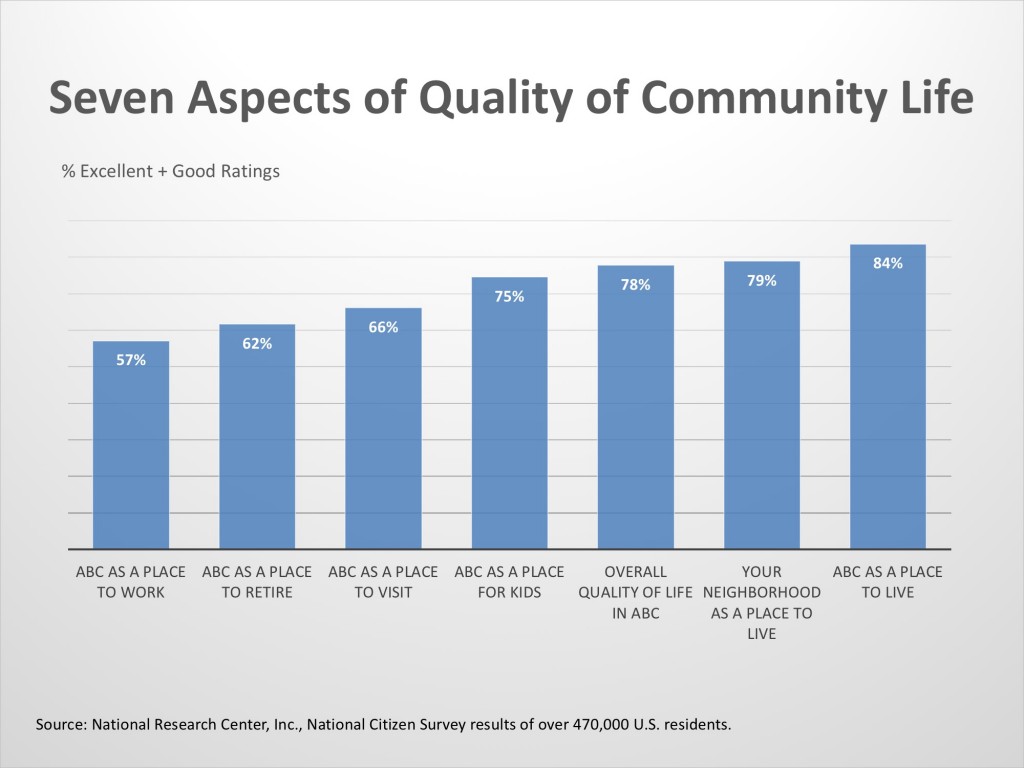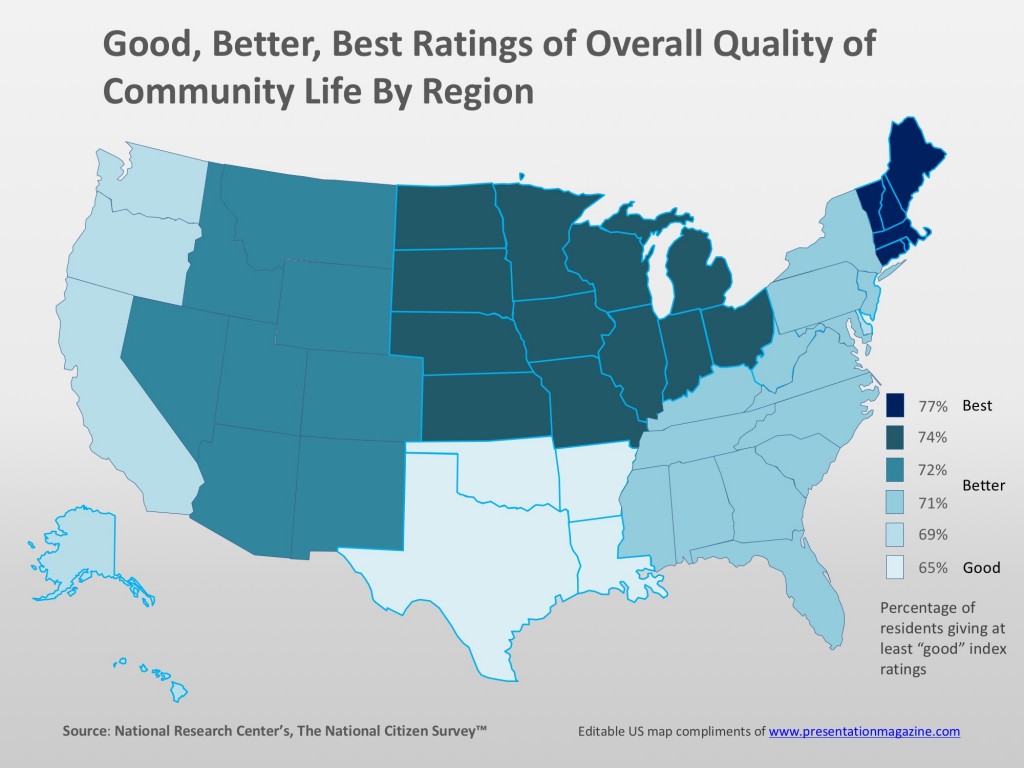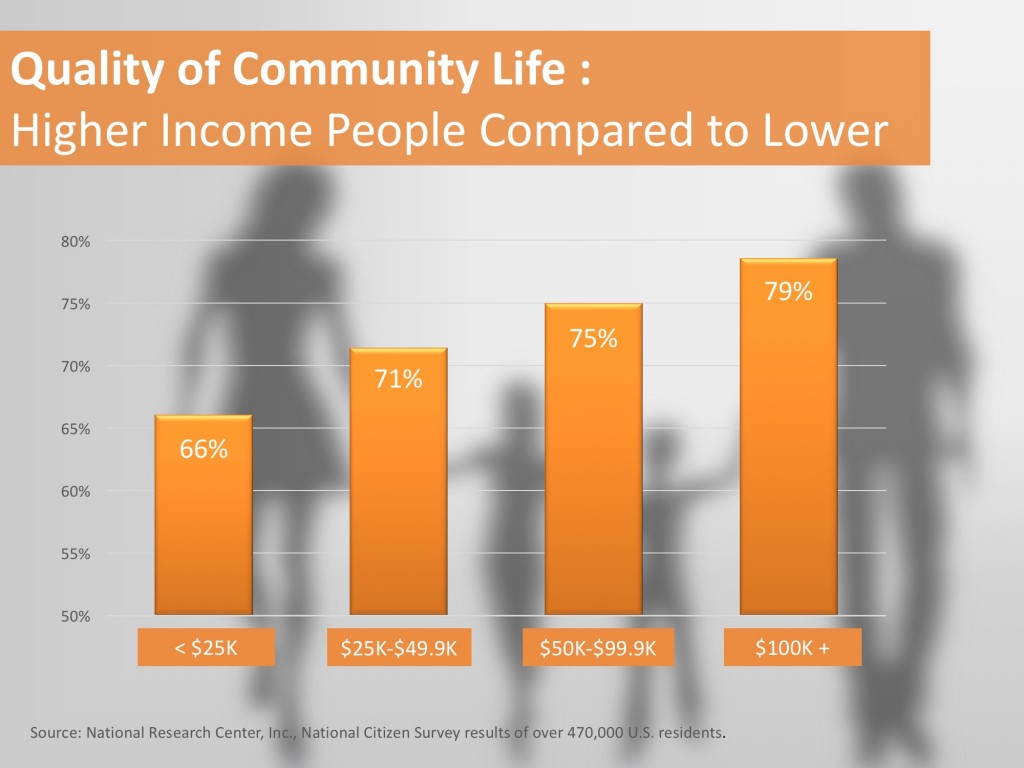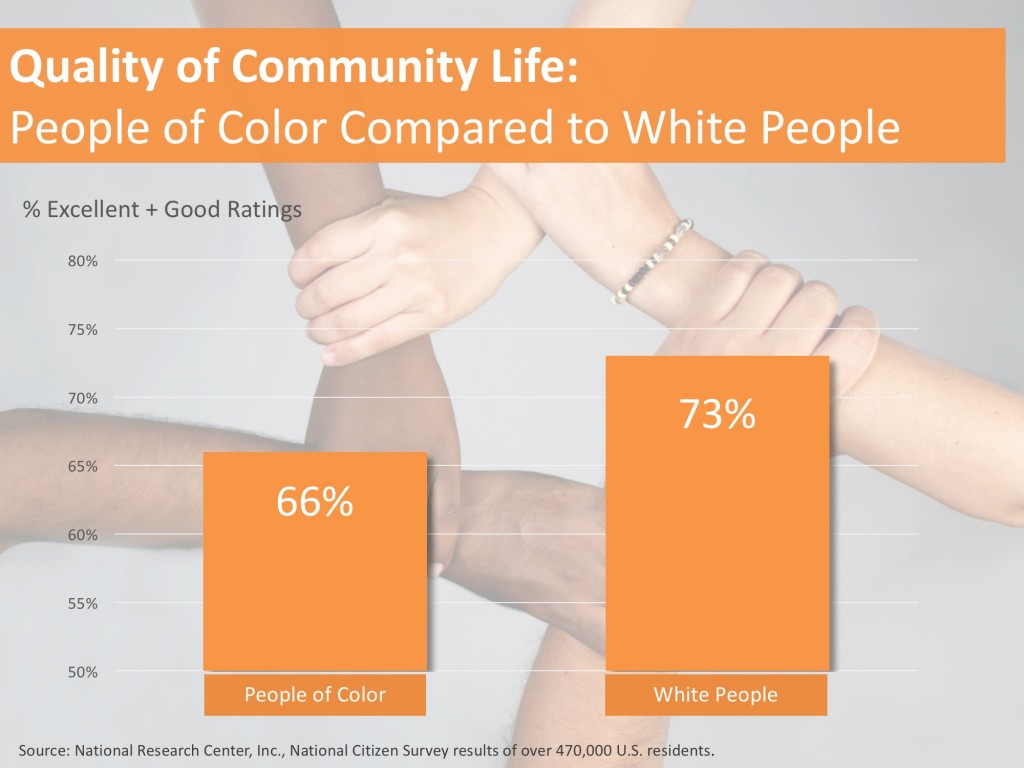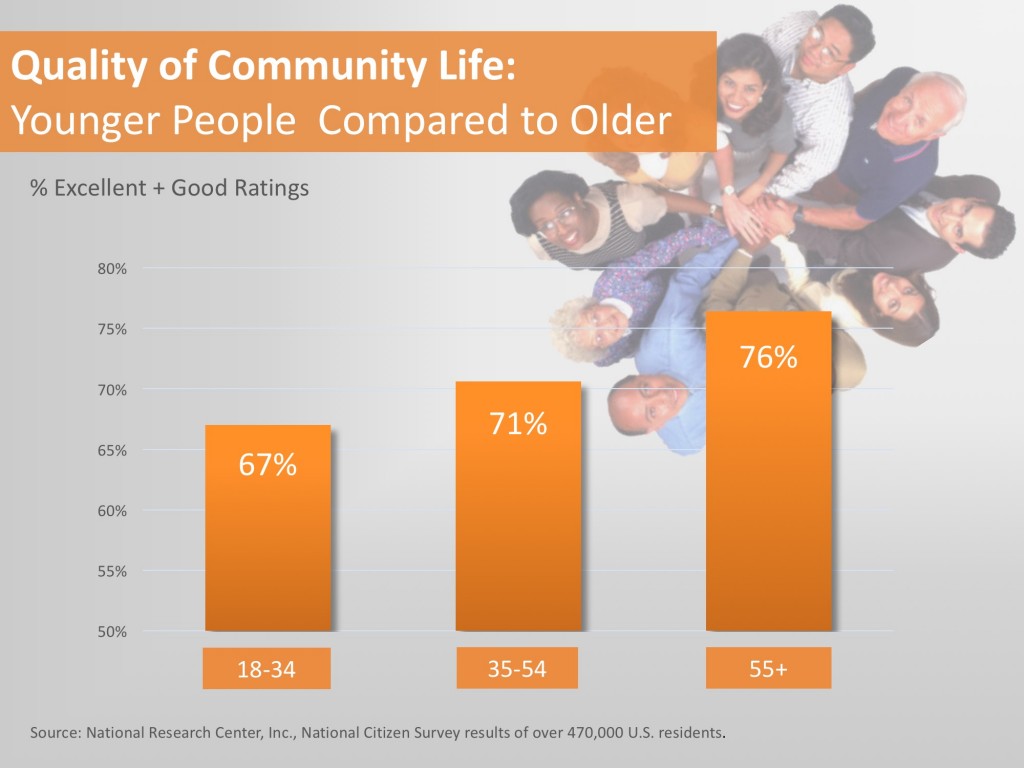Quality of Community Life and Whose Responsibility It Is
By NRC on July 7, 2016

- By Tom Miller -
Performance measures usually count the activities and efficiencies of government service. However, the bottom line in performance must account for the reason government delivers service: to make for strong communities. So while it is important to know how local governments compare in service delivery, it’s even more valuable to know where service delivers success. From this perspective, success is a community whose residents report an excellent quality of life, a great place to work, retire, visit, raise kids and live in agreeable neighborhoods.
Most Americans Like Where They Live
National Research Center’s (NRC) unique database of over 400,000 residents’ opinions reveals the public’s attitudes about the quality of their community life. These data help us unravel the most and least appreciated aspects of communities.
Overall, Americans give their communities good marks. But they do not judge all qualities of community life the same. About 80 percent of Americans give high ratings to the community overall and to the neighborhoods where they live. The lowest ratings come from more economic considerations. Only about 60 percent of Americans give top ratings to the community as a place to work or retire.
But People in Some Places Think Better of Their Communities
Community life is not experienced the same all over the U.S. At the top end of the Community Life Index (the average of our questions on the seven aspects of community) are ratings given by residents living in the Northeastern U.S., and at the bottom are those for the South Central region.
Not only are there differences in the quality of community depending on where people live, but some categories of people within communities regularly experience a better community life than do others.
On average, wealthier residents within an economically diverse community rate their quality of community life higher than do their neighbors with less wherewithal. The same trend applies for race and age differences with residents of color and younger residents giving lower quality evaluations than white or older residents.
Questions to Challenge Local Leaders
What explains the 13{7d2d4cb14c544bbeb3cd4763dc2b1aa4e79f5bb51403ad6dac1e84ac9d980b0d} gap between the poorest and richest; the 12{7d2d4cb14c544bbeb3cd4763dc2b1aa4e79f5bb51403ad6dac1e84ac9d980b0d} gap between highest and lowest rated regions; the 9{7d2d4cb14c544bbeb3cd4763dc2b1aa4e79f5bb51403ad6dac1e84ac9d980b0d} gap between the youngest and oldest; and the 7{7d2d4cb14c544bbeb3cd4763dc2b1aa4e79f5bb51403ad6dac1e84ac9d980b0d} gap between Whites and people of color? Where does the responsibility lie to make quality of community life equally valued by residents of every demographic? The questions in our quality of community index, after all, are about municipal life, not about satisfaction with a car or cell service.
Is it enough to say that the work of government is done when there is a recreation center within one mile of all residents? Have local government leaders done their job by collecting trash from every dwelling? Do we declare victory by noting that everyone is welcome to come to all council meetings?
Are lower community ratings given by people of color, poorer or younger residents or Southerners the consequence of these citizens’ unrelated disaffection with their life situations? Or are the community conditions for these groups worse than for others? Do the residents who give better ratings simply view the community with a rosier perspective because they have the means to rely on private assets rather than on city resources? Can local governments change services or offer amenities that will make community life a more positive experience for those giving lower ratings? Should governments do that?
The data tell us not only who feels better served and where community quality seems best, but they also tell us by how much. We can measure change over time if change is what we seek. But the data don’t declare what can or should be done to improve the perceptions of residents who harbor greater disappointments about community life. The discussion about responsibility for resident ratings of community quality of life is worth having among staff, elected officials and citizens.
Related Articles
- Residents of Every Generation Reveal What Makes a Community Worth Recommending
- Do Americans Feel Law Enforcement has Failed Them?
- Where Workouts Work Out: Best and Worst Regions in the U.S. for Health and Wellness Opportunities
- More of What You Need to Move Your Community Forward
National Research Center, Inc. (NRC) is a leading full-service survey research and evaluation firm focusing on the information requirements of the public sector, including local governments, health care providers, foundations and non-profit organizations. Visit our home on the Web at www.n-r-c.com. Check out our media page for more news, tips and human-interest stories from NRC.
Popular posts
Sign-up for Updates
You May Also Like
These Related Stories

How Vienna Builds Quality of Life Through Special Events
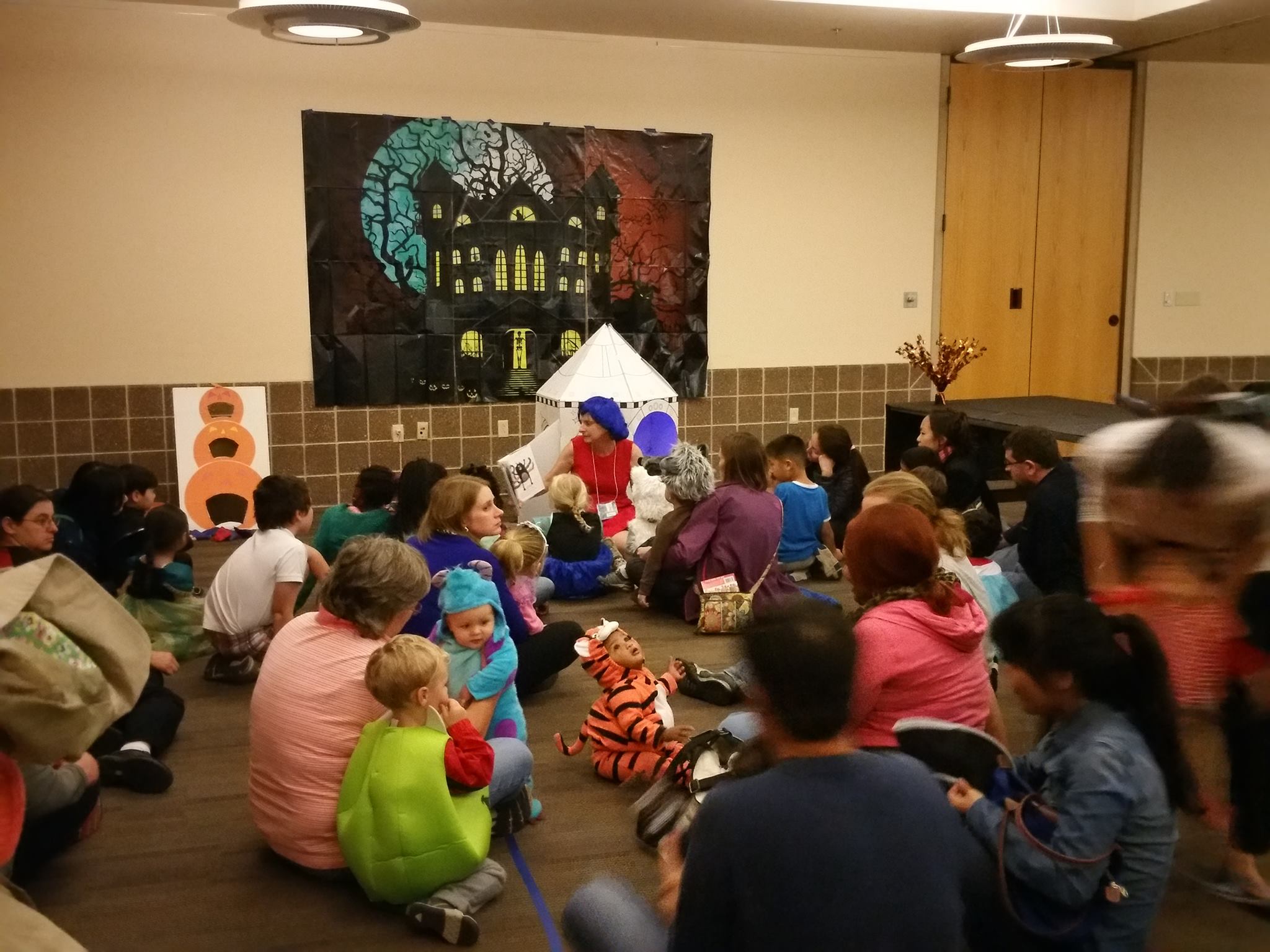
How Richmond Heights Became A Regional Destination for Education


